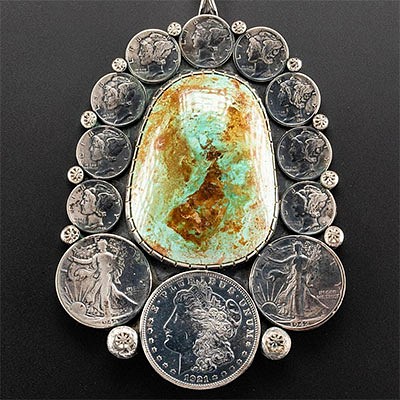19th C. Wuvulu Island Wood Serving Bowl - Apia Nie
Lot 122b
About Seller
Artemis Fine Arts
686 S Taylor Ave, Ste 106
Louisville, CO 80027
United States
Selling antiquities, ancient and ethnographic art online since 1993, Artemis Gallery specializes in Classical Antiquities (Egyptian, Greek, Roman, Near Eastern), Asian, Pre-Columbian, African / Tribal / Oceanographic art. Our extensive inventory includes pottery, stone, metal, wood, glass and textil...Read more
Categories
Estimate:
$4,000 - $6,000
Absentee vs Live bid
Two ways to bid:
- Leave a max absentee bid and the platform will bid on your behalf up to your maximum bid during the live auction.
- Bid live during the auction and your bids will be submitted real-time to the auctioneer.
Bid Increments
| Price | Bid Increment |
|---|---|
| $0 | $25 |
| $300 | $50 |
| $1,000 | $100 |
| $2,000 | $250 |
| $5,000 | $500 |
| $10,000 | $1,000 |
| $20,000 | $2,500 |
| $50,000 | $5,000 |
| $100,000 | $10,000 |
| $200,000 | $20,000 |
About Auction
By Artemis Fine Arts
Feb 25, 2021
Set Reminder
2021-02-25 10:00:00
2021-02-25 10:00:00
America/New_York
Bidsquare
Bidsquare : American Frontier | Ethnographic | Tribal Art
https://www.bidsquare.com/auctions/artemis-gallery/american-frontier-ethnographic-tribal-art-6449
Featuring historical examples from the American, Spanish, and Mexican frontiers, as well as Native American, Ethnographic, Tribal, Oceanic, Spanish Colonial, more. All items offered for sale have been legally acquired, are legal to sell and are guaranteed to be as described or your money back. Artemis Fine Arts info@artemisgallery.com
Featuring historical examples from the American, Spanish, and Mexican frontiers, as well as Native American, Ethnographic, Tribal, Oceanic, Spanish Colonial, more. All items offered for sale have been legally acquired, are legal to sell and are guaranteed to be as described or your money back. Artemis Fine Arts info@artemisgallery.com
- Lot Description
Oceania, Papua New Guinea, Wuvulu Island (also known as Mary Island, Matty, Maty Island, Tiger Island, Tiger-Inseln and Wuwulu), ca. 19th century CE. A striking hand-carved wooden serving dish presenting a classic hourglass form known as an apia nie, traditionally used to catch coconut milk harvested by squeezing the meat of a coconut over the bowl. The vessel is carved out of a single piece of fine deep brown wood that has developed a rich patina resulting from years of exposure to the oil derived from coconut milk and age. Size: 18.2" L x 11.125" W x 3.2" H (46.2 cm x 28.3 cm x 8.1 cm)
According to the Metropolitan Museum of Art, "The unique hourglass-shaped bowls, or apia nie, created on the islands of Wuvulu and Aua embody the spare, minimalist aesthetic of Micronesian art. Still made today, apia nie are used specifically to collect coconut milk, extracted by squeezing balls of grated coconut meat over the bowl. The wide shallow ends of the bowls curve gently downward toward the deeper center, in which the freshly squeezed liquid collects. Despite their apparent delicacy, apia nie are everyday vessels in widespread use. Many older examples develop a distinctive glossy patina through years of contact with the oil in the coconut milk. In most cases, the form of the vessel, as here, serves as its only adornment, but the interiors of some examples are painted with linear geometric designs."
See a similar example in the collection of the Metropolitan Museum of Art (accession number 1979.206.1428).
Provenance: private Hawaii, USA collection; ex-private Dr. Gallagher collection, Sydney, Australia, acquired in 2018
All items legal to buy/sell under U.S. Statute covering cultural patrimony Code 2600, CHAPTER 14, and are guaranteed to be as described or your money back.
A Certificate of Authenticity will accompany all winning bids.
We ship worldwide and handle all shipping in-house for your convenience.
#154577Stabilization to one large fissure from midsection to one edge, with very light adhesive residue along break lines. Minor abrasions to base, peripheries, and basin, with several stable hairline fissures, otherwise intact and excellent. Gorgeous patina throughout. Old inventory label beneath base.Condition
- Shipping Info
-
All shipping is handled in-house for your convenience. Your invoice from Artemis Gallery will include shipping calculation instructions. If in doubt, please inquire BEFORE bidding for estimated shipping costs for individual items.
-
- Buyer's Premium



 EUR
EUR CAD
CAD AUD
AUD GBP
GBP MXN
MXN HKD
HKD CNY
CNY MYR
MYR SEK
SEK SGD
SGD CHF
CHF THB
THB
















